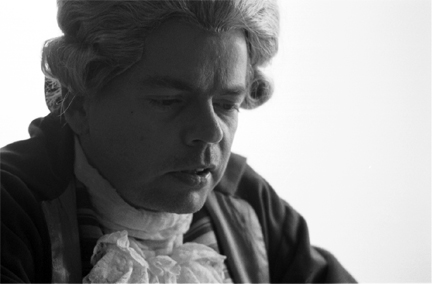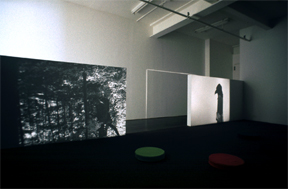| Subcutaneous |
| |

|
| |
| 2001 |
Continuous synchronized color and black and white double 16mm film projection with
sound, 34 minutes, dimensions variable |
| |
The installation and book, "Subcutaneous," trace the history and legacies of physiognomy—the prejudiced belief that a person's character might literally be
read on the surface of the face—theorized by a protestant minister, Johann Caspar Lavater, in the eighteenth century. Lavater suddenly found his name and reputation associated with physiognomy when a friend signed a publishing contract in his name for a book on the subject. For Lavater physiognomy was only a parlor game, but he scrambled to meet his printing deadline, reproducing many of the racist and xenophobic sentiments of his time while attempting to bridge religion and science. The first of the four-volume work "The Physiognomic Fragments, Intended to Promote the Knowledge and Love of Mankind" appeared in 1775. "Subcutaneous" examines the matrix of friendships and rivalries that brought the book into being, a circle that included the young Johann Wolfgang von Goethe.
In the installation two films are projected side by side onto low walls that divide the room. Spectators enter and exit through the space between the images. Visitors first encounter the "audience" watching the films, then the films, and finally subsequent visitors entering after them. The deliberately interruptive social dynamics of the exhibition become part of the work. |
|
| |
 |
| |
| |
| |
| |
| |
| |
| |
| |
| |
| |
| |
| |
| |
| |
| |
| |
| |
| |
| |
| |
| |
| |
| |
| |
| |
| |
| |
| |
| |
| |
| |
| |
| |
| |
| |
| |
| |
| |
| |
| |
|
|
|